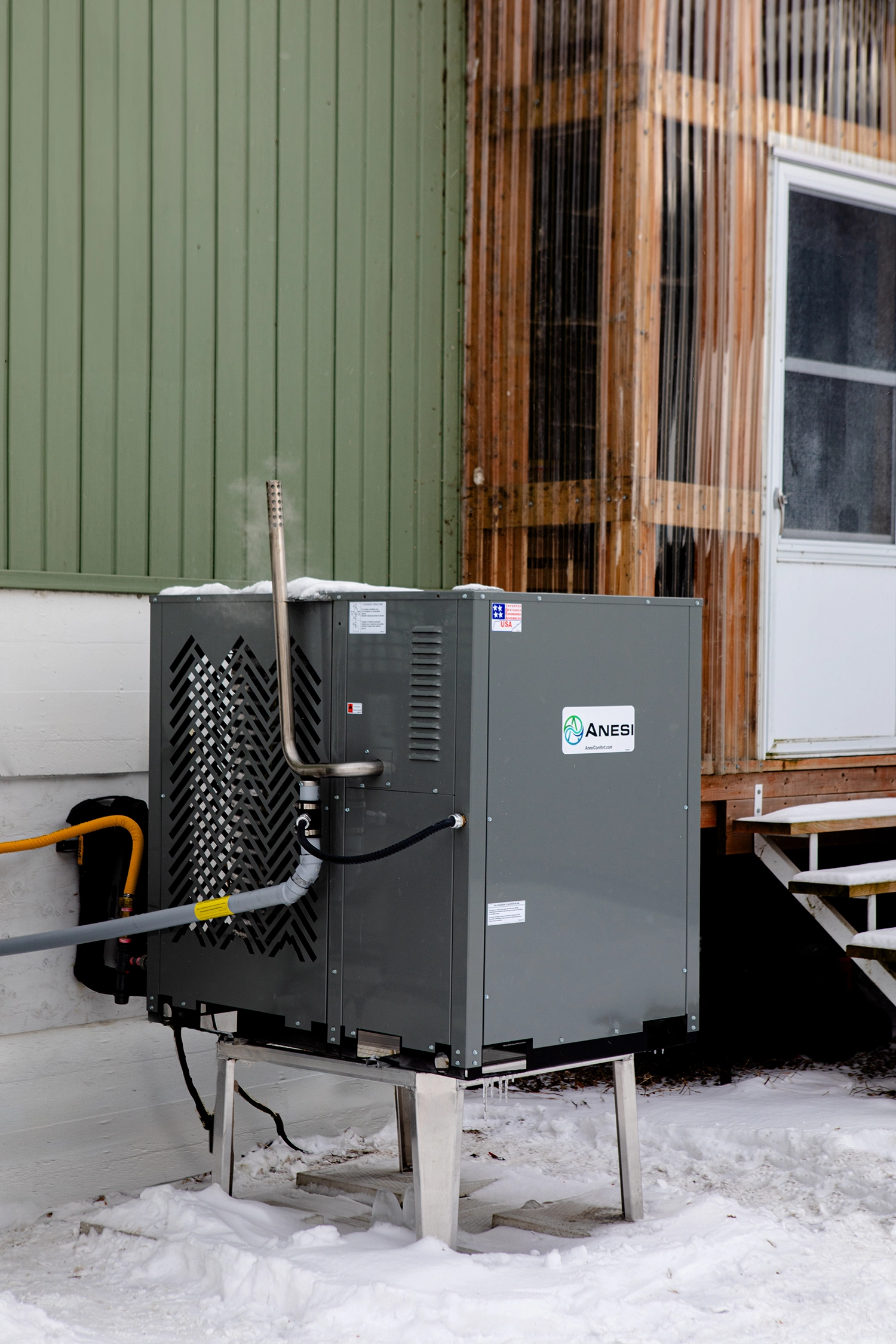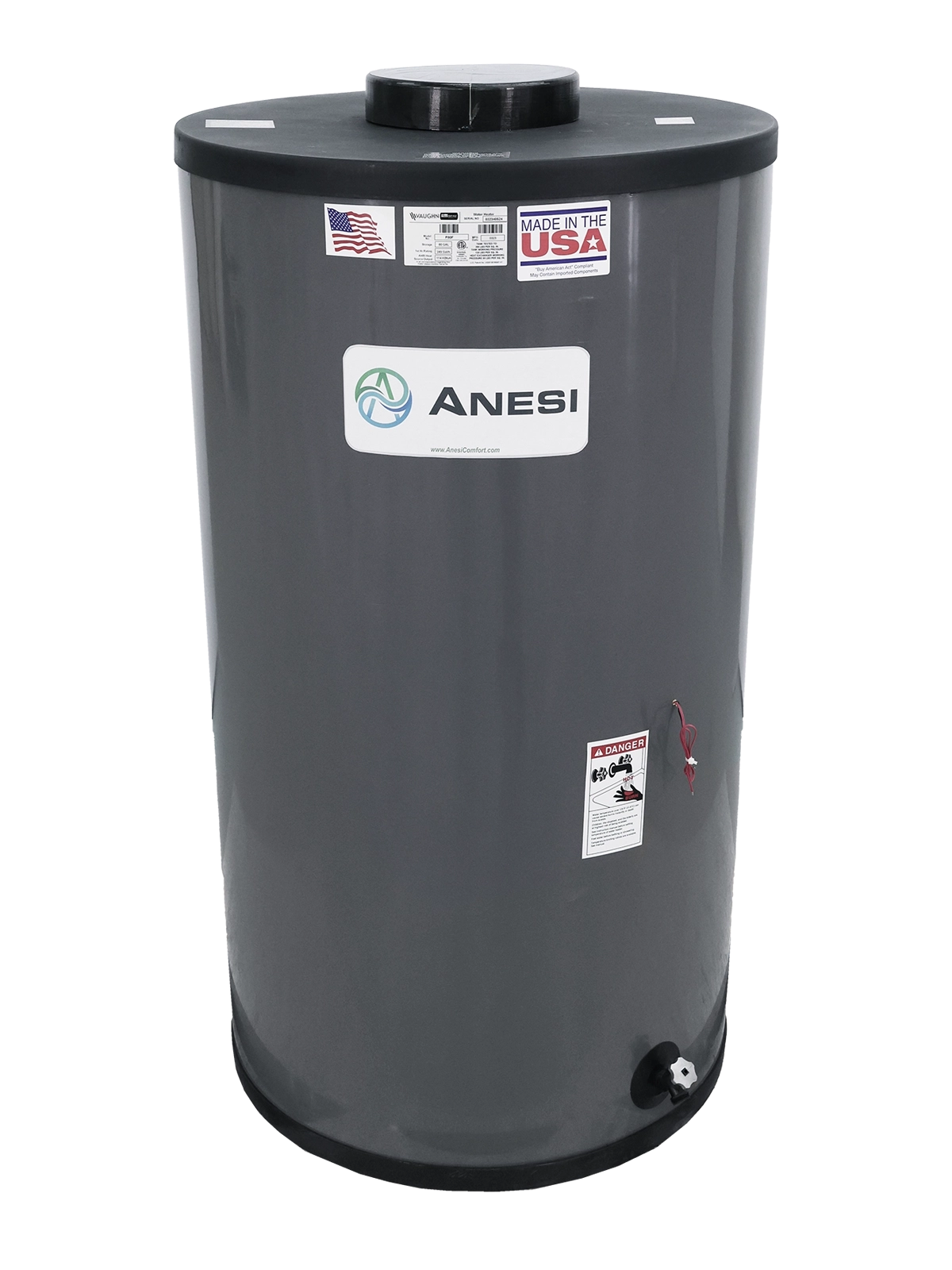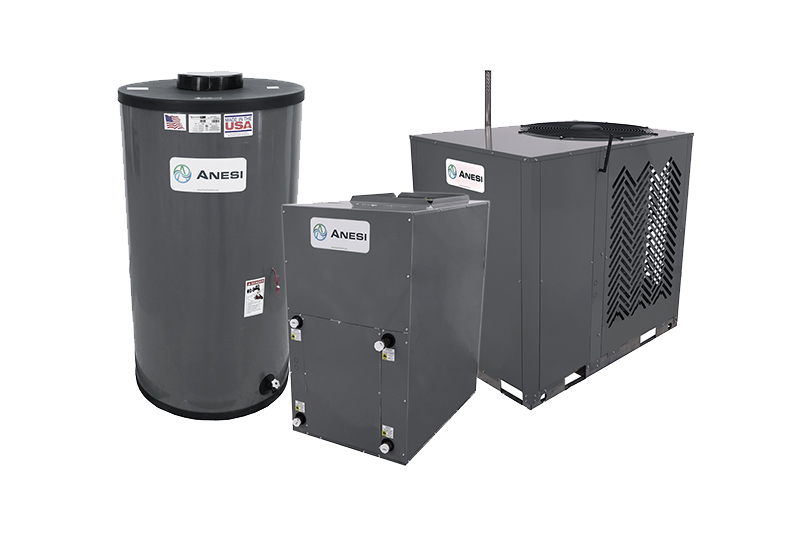
Forced Air Space Heating with Anesi Gas Heat Pumps
When the weather outside is frightful, you don’t want to worry about keeping your family warm. Anesi gas heat pumps use your natural gas or propane fuel source to provide the warmth you need at a price you can afford.

Why Choose Gas Absorption Heat Pumps?
When it comes to forced air heating systems, efficiency and reliability matter. Gas absorption heat pumps (GAHPs) offer a next-generation solution that outperforms traditional gas furnaces by delivering up to 140% AFUE. Instead of simply burning fuel, GAHPs use a natural gas-powered absorption cycle to capture heat from outdoor air and distribute it through your ductwork—providing consistent, comfortable airflow throughout your home or business.
Why They’re Ideal for Forced-Air Systems
- High Efficiency: GAHPs produce more heat energy than the gas consumed, reducing operating costs and energy waste.
- Cold Climate Performance: Works in extreme conditions down to -40°F, ensuring dependable forced-air heating without backup systems.
- Eco-Friendly Comfort: Uses natural refrigerant with zero global warming potential and ultra-low NOx emissions for sustainable heating.
- Seamless Integration: Designed to connect with existing ductwork, making upgrades simple for homes.
By choosing a gas absorption heat pump for your forced air space heating, you get lower energy bills, reduced emissions, and superior comfort—all in one system. Read more about using an Anesi Gas Heat Pump for residential heating.
Key Benefits of Forced-Air GAHP Systems
Gas absorption heat pumps (GAHPs) bring next-level performance to forced air space heating systems, combining the comfort of warm airflow with unmatched energy efficiency. Here’s why they stand out:
Superior Efficiency
- Achieve up to 140% AFUE, far exceeding traditional gas furnaces.
- Lower fuel consumption means significant savings on energy bills.
Consistent Comfort
- Delivers steady, warm airflow through existing ductwork for even heating.
- Ideal for homes and light commercial spaces where forced-air distribution is preferred.
Cold Climate Reliability
- Operates reliably in temperatures as low as -40°F, ensuring dependable heating without backup systems.
- Perfect for regions with harsh winters where traditional heat pumps struggle.
Eco-Friendly Heating
- Uses a natural refrigerant (ammonia) with zero global warming potential.
- Ultra-low NOx emissions help reduce environmental impact.
Easy Integration
- Designed to work with standard forced-air systems, making upgrades simple.
- No major electrical modifications required—ideal for retrofit projects.
By choosing a GAHP for your forced air space heating, you get lower operating costs, sustainable performance, and reliable comfort in any climate.


Environmental Benefits of Gas Absorption Heat Pumps
Gas absorption heat pumps for forced air space heating offer a cleaner, more sustainable alternative to traditional boilers and furnaces. While conventional systems typically operate at 80–95% efficiency, GAHPs achieve up to 140% AFUE, using up to 50% less natural gas and significantly reducing greenhouse gas emissions. These systems also eliminate harmful synthetic refrigerants by using natural ammonia (R717), which has zero global warming potential and zero ozone depletion potential. Combined with ultra-low NOx emissions and compatibility with renewable natural gas, GAHPs enable homes and businesses to meet decarbonization goals without compromising comfort or performance
Anesi Gas Heat Pump Forced Air Space Heating System Components

80K
Gas Heat Pump

AHU
Air Handling Unit

IST
Indirect Storage Tank
(for optional DHW)
How the Anesi GHP System Works

The Anesi GHP sits outside the home and is connected indoors by a pair of 1-inch copper or PEX pipes. Within these pipes is warm water with food-grade glycol added for freeze protection. This warm water flows through a heat exchanger in the custom Air Handling Unit (AHU) and the modulating blower moves the warm air throughout the home, just the way the old system did. If you want to heat domestic hot water within the Anesi system, an Indirect Storage Tank (IST) replaces the old gas water heater.
The home’s existing infrastructure and utilities (gas and electricity) should support the Anesi system without significant modification. In a furnace replacement situation, the Anesi Air Handling Unit attaches to the existing ductwork. Your installation professional will simply run electricity and gas to the outdoor GHP unit – no need for electric panel upgrades. If your previous gas heating system provided adequate comfort, there is no need to change or upgrade the home’s ductwork.
Explainer Video
This short animation introduces the basic concept of the Anesi Gas Heat Pump. Visit our Resources section for more information.
Remote Monitoring
The Anesi GHP can be monitored remotely to provide data on performance and potential service needs, enabling your installation professional and Anesi to work together to resolve any difficulties. Anticipating problems before they happen and responding proactively is a key feature that makes life easier and lowers costs for both you and your installation professional.
How to Buy Anesi Products
Anesi products are available through HVAC distributors and installation professionals within the USA and Canada.
Contact us for more detailed information about Anesi products and availability.

